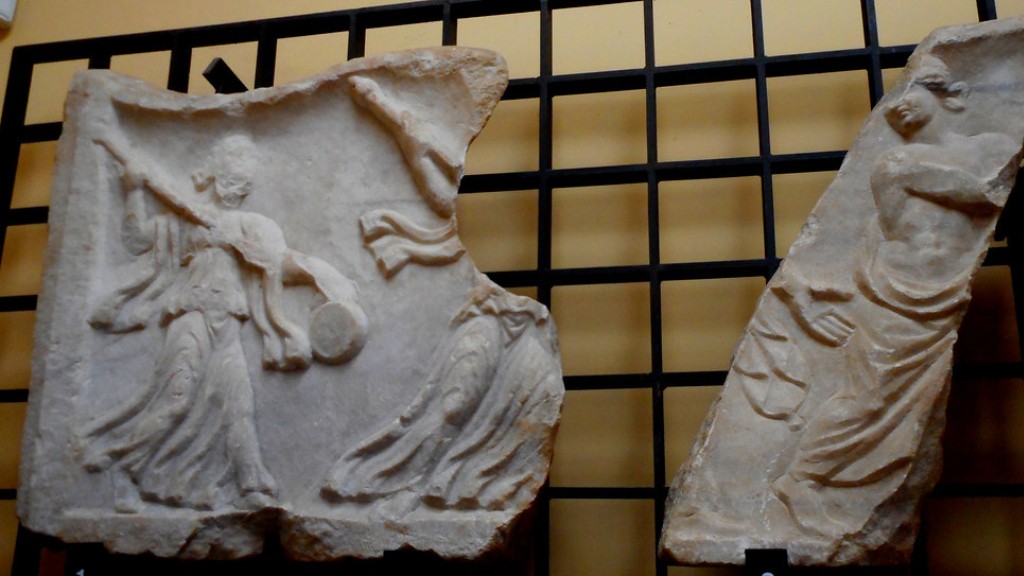What Language Was Spoken in Ancient Rome?
The language of Ancient Rome has been a subject of debate for centuries. It has been argued that Latin, an ancestor of the Romance languages, was the primary language spoken during the Roman Empire; however, there is evidence to suggest several languages were spoken during this period. Language was not only used for communication between citizens, but also for administration and formal documents.
The earliest inhabitants of Rome spoke a variant of the Latin language. This early Latin language is known as ‘Archaic Latin’, and is distinct from the Latin used in the Classical period. The inhabitants of Rome at the foundation of the city in 753 BCE spoke Latin and the language of the neighbouring Etruscans. As the Roman Empire expanded, it gradually incorporated other languages and dialects, as well as other Latin languages.
During the Republic period, Latin had a formal and an informal register. The informal register was used by everyday people and was recognised by spoken cues such as context and intonation, while the formal register was used in legal texts, literature, and public debates. Latin literature was also highly influential throughout the Roman Empire.
Under Roman rule, many languages and dialects were spoken in provinces, such as Greek, Gaulish, Jewish, and Syrian. Although Latin was the primary language spoken in the provinces, there was a diverse range of language spoken in the cities. Latin was also used as the language of administration in the provinces, and official documents were often written in Latin.
In the 1st century AD, several dialects of Latin were spoken in Rome, including Latin, Old Latin, Old Latin of the city, Roman Latin, and Urban Latin. Urban Latin was the most commonly spoken language in the city, although a form of the language known as Vulgar Latin, or Street Latin, was also found in the poorer areas of Rome. This language was a mixture of Latin, Greek and other languages and was used in informal conversations as well as in certain areas of the city. By the 4th century AD, Latin had become the sole language spoken by citizens of Rome.
Evolution of Latin
The evolution of Latin in Rome is a fascinating area of research. During the late Republican and Imperial periods, Latin evolved into various regional varieties, and this is reflected in documentary evidence from the time. The language we now know as Classical Latin was based on the written language of the time.
The grammar and syntax of Latin underwent several changes during this period. The early Latin forms of the language were very conservative and preserved the original structure and morphology. These characteristics are still reflected in modern Romance languages, such as Italian, Spanish and French.
Other changes that occurred in Latin included the simplification and modernisation of verb conjugations and the development of new verbal tenses. This new structure made it possible to express thoughts, feelings and emotions more clearly than before.
Word order also changed in certain cases and new words were introduced. New words were taken from foreign languages and adopted into Latin, such as words from Greek, Etruscan and other languages.
Influence of Latin on Modern Languages
The influence of Latin on today’s languages cannot be underestimated. There are several traits of Latin that were adopted by modern languages, such as syntax and morphology. It is also the source of many of the words used in the Romance languages, as well as English and other global languages.
Latin is still used in some professions and in academia. Latin words are also used in the sciences, and in many medical, legal and political terms. Latin words are often used because of the accuracy of the language, which can be important when discussing issues in a technical or scientific manner.
Latin remains one of the most important contributions to the world’s languages, and is still spoken in some countries. Although its overall role has diminished since the collapse of the Roman Empire, Latin continues to inform and shape our language today.
Variability of Latin
The variability of Latin is one of the many reasons why the language had such a major impact on modern languages. Latin was a dynamic language, and it underwent various changes according to the societies that adopted it. This enabled Latin to maintain its relevance and influence for centuries.
Variability was also seen in the pronunciation of the language. While the syntax and grammar of Latin remained relatively stable, the pronunciation changed according to the regions where it was used. This further enabled the language to remain a living language in many different places.
The ability of Latin to incorporate words from other languages helped it to remain relevant as it evolved over time. This also enabled Latin to remain a language of communication and a language of literature, even long after the fall of the Roman Empire.
Latin in Popular Culture
Latin has also had an impact on popular culture. Latin words and phrases are frequently used in television and film, and they appear on clothing and other items. Latin is also used in advertising and marketing, and it is frequently used in the titles of movies and books.
In modern times, Latin is still taught in many schools. Even for those that are not specifically studying the language, Latin can be a useful tool for understanding English as it helps to identify the roots of many English words.
Latin has had an extraordinary impact on the world. Its influence has been felt in linguistics, literature, politics, and culture for centuries and continues to do so today. The legacy of Latin and its influence on modern languages cannot be overstated.
Modern Uses of Latin
Today, Latin is still used in some contexts, such as certain legal and scientific terms. However, it is no longer the primary language used in communication or expression, and its role has diminished significantly since the fall of the Roman Empire.
Despite its diminished role, Latin remains an important language. It is a source of knowledge, understanding, and insight, and it demonstrates the power of language to change and evolve over time.
Latin is also used in the naming of flora and fauna, in brand names and logos, and for various other purposes. In many countries, Latin phrases and words appear on coins and banknotes, as well as on monuments and public buildings.
Despite its diminished role, Latin remains an important language. Its influence can be seen in modern languages, and its legacy remains in the form of Latin words, phrases and terms used today.
Conclusion
Latin was the primary language spoken in Rome, but it evolved tremendously and incorporated words and phrases from other languages. This enabled Latin to remain relevant in many regions and societies, despite the decline of the Roman Empire. Latin had an important influence on modern languages and it is still used in some contexts today.





